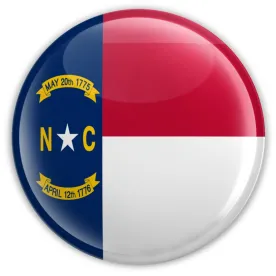For many, the concept of Native American history engenders imagery of teepees, totem poles, powwows, and Pocahontas. While these ideas are grounded in truth, they often overshadow the untold stories of the more recent past. One of those stories is about the day the Lumbee Tribe, my people, ran the Klan out of Robeson County, North Carolina.
In the 1950s, the Jim Crow South molded to the racial dynamics of the county. Robeson County was triracial, with many of the approximately 30,000 members of the Lumbee Tribe finding their home in Pembroke, North Carolina and surrounding areas. Here, there were three water fountains: white, Black, and Indian. On the heels of the landmark decision in Brown v. Board of Education, the Ku Klux Klan and wizard James W. “Catfish” Cole of South Carolina set out to uphold segregation in the county and stated that there were “30,000 half-breeds” who they intended to “scare up.”
In January 1958, the Klan announced a night rally to take place at Hayes Pond, near Maxton, North Carolina. In the days leading to the rally, the Klan sought to incite fear amongst the Lumbee population, burning crosses in the yards of an Indian family that had recently moved to a “white” neighborhood and an Indian woman who was rumored to be dating a white man. A caravan made its way through the streets, hurling insults and inviting supporters to come hear the Klan chaplain speak about “Why I Believe in Segregation.”
However, supporters wouldn’t be the only attendees on the evening of the rally. Groups of Lumbees were banding together with plans to disrupt the event, arming themselves with, amongst other things, all of the ammunition from the local hardware store. The Lumbee refused to allow the Klan to find a home on their land. As the rally approached, it became apparent that the event would have the potential for violence, and the Robeson County sheriff drove down to South Carolina, asking the Klan not to hold the rally. The wizard refused, telling the sheriff that it sounded like he didn’t know how to handle his people and that the Klan would come show them how.
On the evening of Jan. 18, 1958, approximately 50 to 100 Klan members gathered in a field of broomstraw on a cold winter night, joined by members of the local news media and highway patrol officers. They had one small problem: They were severely outnumbered. Nearly 500 Lumbees also arrived by the carload. The story goes that at the time the rally was to begin, members of the Klan and several Lumbee gathered around a single light pole, powered by a car battery. An altercation ensued, and a Lumbee shot out the light with a shotgun. Gunshots were fired into the air, and physical altercations broke out. The Klansmen ran away into the nearby woods, leaving behind their robes, their banner, and even the wizard’s wife, whose car had to be pushed out of a ditch by the Lumbee.
The incident made its way to the national news media, where Charlie Warriax and Simeon Oxendine famously cloaked themselves in the abandoned banner. To date, there have been no known Klan rallies in Robeson County. The moral of the story: Don’t mess with the Lumbee.
The Lumbee who gathered at Hayes Pond were regular people from a poor farming community in Southeastern North Carolina. Their story is a point of pride for Lumbees of today and yesterday, and it is a story that deserves to be told. These stories are innumerable, and Native American history is so much more than the first “Thanksgiving.” As we enter into another season of thanks, I implore us all to do what the Lumbee did on that cold winter night: Challenge the narrative. Our society finds itself in an ever-changing, complex space. We all benefit by learning from one another, challenging our understanding of our past, and working together to create a better future. Our battles of today will be the stories of tomorrow: How do you want to be remembered?




 />i
/>i

